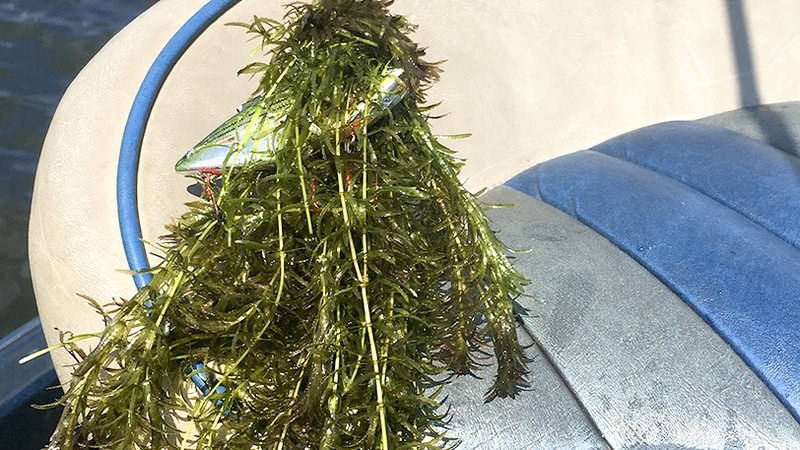Aquatic vegetation greets Forrest Wood Cup anglers on Ouachita
ON 08-01-2018

Aug. 1, 2018
Randy Zellers
Assistant Chief of Communications
HOT SPRINGS – August can be a brutal time to bass fish on a clear-water lake in Arkansas, but hopes are high that 56 anglers competing in the Forrest Wood Cup, Aug. 10-12, will crack the code and bring some impressive weights to the scales. The Cup is the championship event for the Fishing League Worldwide bass fishing tour, one of the largest professional fishing organizations in the country.
With more than 970 miles of shoreline, some anglers are likely to spend their days beating the banks in search of overhangs and other shoreline cover. The real pot of gold, however, may be found in some of the aquatic grass that’s making a comeback on the lake.
Years ago, the deep grass on Ouachita was one of the key features on which anglers would focus when the sun was beating down. Much of the best summer bass fishing revolved around the wall of habitat formed by aquatic vegetation such as hydrilla, millfoil and coontail, growing as deep as 20 feet in some areas of the lake.
“Much of the lake experienced a die off of the aquatic vegetation in 2008 and 2009,” said Brett Hobbs, fisheries biologist at the Arkansas Game and Fish Commission’s Hot Springs Regional Office. “It has been a few years, but we’ve seen some good growth of aquatic grass back in the lake.”
Small pockets of hydrilla and coontail were evident when the Forrest Wood Cup last visited Ouachita in 2014. Last year, however, many regular Ouachita anglers noticed a very dramatic increase in the availability of the plant, particularly in the clearer sections of the lake.
“Rabbittail, Buckville, and Crystal Springs all have good growth, as does Lake Ouachita State Park on the far east end of the lake,” said Sean Lusk, assistant fisheries biologist for the AGFC. “This grass is a good thing and will help not only as a place for anglers to focus, but to add essential habitat for the fish in the lake for many years to come.”
Lusk says that while hydrilla and milfoil are non-native, the nursery habitat they provide is extremely beneficial to a fishery as long as they don’t overrun the system.
“Up to about 30 percent coverage in a lake is beneficial, but after that you do see some negative effects of grass,” Lusk said. “It can become so dense that the predator fish cannot get to the prey species, and anglers can’t reach either.”
Hobbs mentions that the surface of the grass may set up well for anglers during the tournament.
“The lake level is currently just below 574 feet (above mean sea level),” Hobbs said. With continued dry weather and sustained power generation at Blakely Mountain Dam, anglers can expect falling lake levels to meet expanding submersed aquatic vegetation. This will start to form surface mats of vegetation along shoreline contours.”
In addition to the surface mats and deep weed edge, hundreds of deep fish attractors, placed by the AGFC, U.S. Army Corps of Engineers and bass anglers also are available throughout the lake, which congregate bass during summer. All fish attractors placed by the AGFC or its partners have been marked with blue fish attractor icons on the interactive map at www.agfc.com/en/resources/maps.
Be sure to visit www.flwfishing.com/forrestwoodcup for a list of events scheduled around the Forrest Wood Cup, including what could be the largest FLW fishing expo ever.
Recent News
Subscribe to Our Weekly Newsletter E-mails
Don’t miss another issue. Sign up now to receive the AGFC Wildlife Weekly Newsletter in your mailbox every Wednesday afternoon (Waterfowl Reports are published weekly during waterfowl season and periodically outside the season). Fishing Reports arrive on Thursdays. Fill in the following fields and hit submit. Thanks, and welcome!


